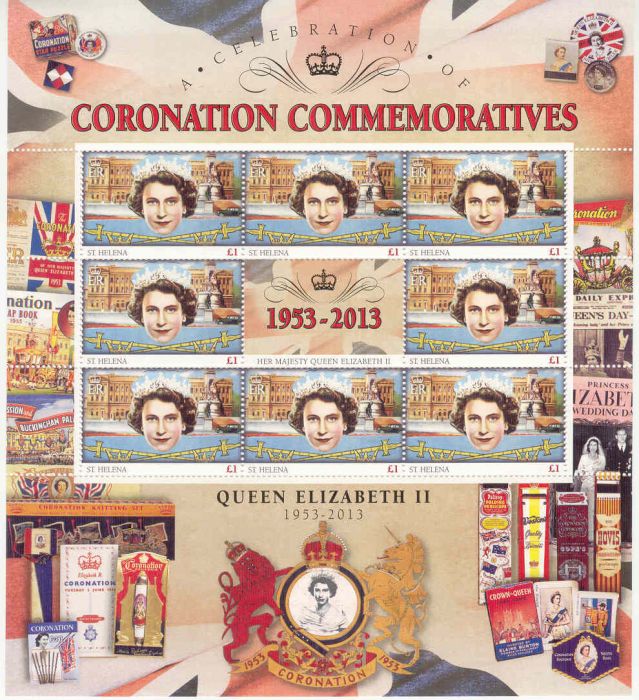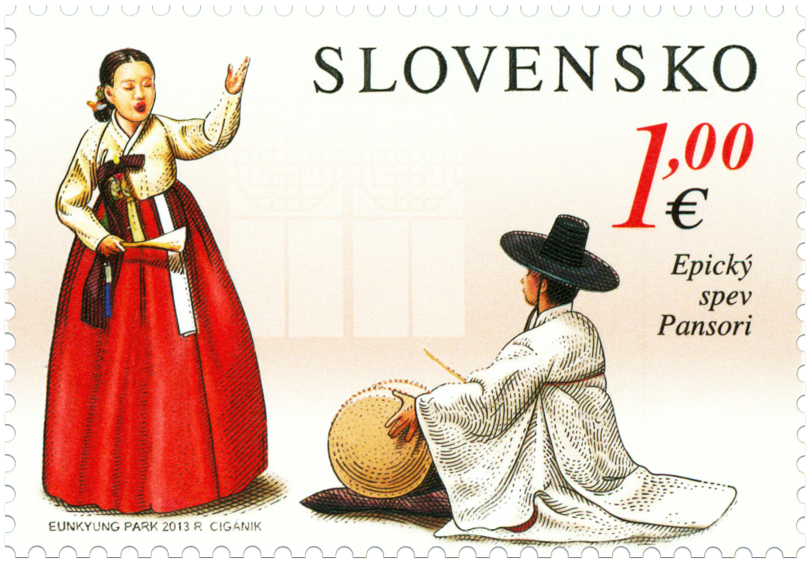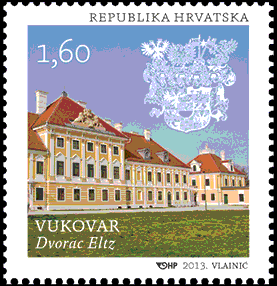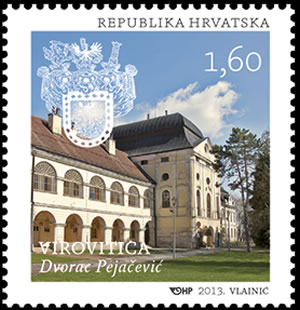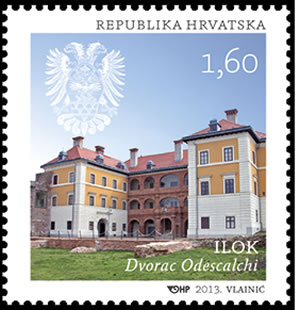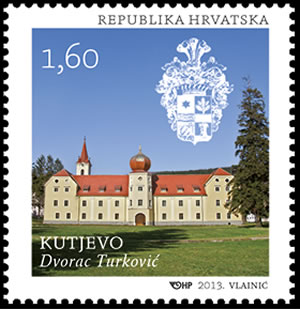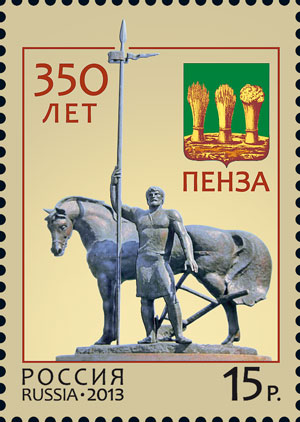
Although there are remains of settlements dating back to
the Viking Age, the town Klaksvík as we know it today, is a relatively
new phenomenon. Around the large cove there were originally four large
farms, which gradually developed into separate neighbourhoods: Gerðar,
Myrkjanoyri, Vágur and Uppsalir. The population was scarce, in 1802 the
census showed that 88 people lived in the four districts.
At
that time the Faroe Islands were subject to a royal trade monopoly by
the Danish throne. It goes without saying that this was not very
conducive to the islands' development - and with the political and
social changes, which took place in Denmark and other Nordic countries
in the first half of the 19th century, the requirement grew for free
trade in the Faroe Islands.
Branches
In
the 1830s it was decided to strengthen the Trade Monopoly, and prepare
the population in the Faroe Islands for a future free trade. As part of
these initiatives branches were set up outside Tórshavn. The first
branch opened in 1836 in Tvøroyri Suðuroy, two years later the branch in
Klaksvík opened to cover the Northern Islands - and finally, in 1839 a
branch opened in Vestmanna to service the Western Isles.
Establishment Klaksvík
As
mentioned before, the Northern branch of the Trade Monopoly opened in
1838. It was built just north of the settlement Vágur, and was referred
to as "Establishment Klaksvík," as it was situated by a bay at the foot
of the mountain "Klakkur". This location was later the reason that the
village Vágur was renamed Klaksvík - a name which eventually came to
include all the settlements around the bay.
The
original trading house is the northernmost of the adjoining buildings
we know today, and is normally referred to as "Gamla pakkhús" (The Old
Warehouse). Besides this, there was also built a dwelling house, various
outbuildings and a jetty on the beach. From 1839 the manager of the
branch was the renowned Johan Mortensen, who, after the introduction of
free trade, established the powerful Mortensen's trade company in
Tvøroyri, Suðuroy.
Nýggja pakkhús
Eventually
the company grew and in 1847 a two-storied building was built south of
the original warehouse. This is the house that today is called "Nýggja
pakkhús" - The New Warehouse. So originally there were two freestanding
buildings, and it is only later, around 1896, that the houses were built
together. Inside the new building you can still see the Royal Trade
Monopoly logo, a winged Hermes helmet, cut into one of the door frames.
This logo is only preserved in the Faroes. Hermes was the merchants' god
in Greek mythology.
The abolition of the Trade Monopoly
By
an Act of March 21st 1855, the Danish authorities decided to liquidate
the Faroese Trade Monopoly. The liquidation should take place by January
1856, but there would be some time before anything happened. But on May
15th 1856 an auction was held of the properties of the Trade Monopoly
in Klaksvík. In tough competition with other stakeholders, a
representative of the Danish merchant and tobacco manufacturer Jørgen
Bech bought the entire property for 6,210 rix-dollars.
A new era
The
Trade Monopoly was now a thing of the past on the Faroe Islands, and
this was the beginning of a rapid economic and social development.
Several new trading companies were established and began their
development of the Faroese trade and shipping business as well as the
growing fishing industry.
E.
E. Meijer, who on behalf of Jørgen Bech & Son, had bought the
Monopoly’s properties in Klaksvík, continued for the next four years as
its representative in the Faroes. The old manager, Johan Mortensen
continued for a year and a half after the acquisition, until he moved to
Tvøroyri, bought trading rights and established Mortensen's trade,
which for long was the leading trade and shipping company on the Faroes.
In
1858 J.C. Djurhuus took over as manager of Jørgen Bech & Son in
Klaksvík, and ran the business for the next 50 years. During this period
the company grew rapidly and established branches in many parts of the
country.
Jørgen Bech died in
1870 and his son Peter Bech took over the Danish company. At the same
time the Danish businessman and politician J. Gustav Hansen bought a
part of the company, and by 1907 he owned the entire company.
Free
trade was of great importance for the development of Klaksvík. Already
in 1865, Jørgen Bech & Son owned several fishing vessels and this
had an impact on the population, which in 1907 passed 700 people.
Although the development was not as explosive as in Tvøroyri, Klaksvík
started its transformation from the old agricultural society into a
modern fishing society. With support from the visionary Peter Bech
Hansen and J. G. Hansen, schools were built and the first doctor came to
town – and at the turn of the century there were four shops in the
small village. In 1910 a small motor boat yard was built by the old
trade houses, and the foundation was established for a future
development of what later became the largest fishing port on the Faroe
Islands.
In
1915 the enterprising businessman JF Kjølbro started a trade company in
Klaksvík and this was the beginning of a rapid development. Within a
few years Kjølbro expanded into the country's largest fishing company
with a large fleet of fishing-sloops, later motorized vessels of various
types, a fish plant and a shipyard. During the 1920s and 30s people
moved from the Northern Isles to Klaksvík to live and work - and only
about a century after the Trade Monopoly had opened its branch at the
rather deserted cove up in the Northern Isles, Klaksvík had evolved into
the second largest city on the Faroes - and the islands' largest
fishing port.
The old trade company
But
back to the old trade buildings. In 1883 the shop moved from the old
building into the new. On the ground floor there was a shop, while the
first floor, which then was a large room, among other things was used as
a wine and spirits store. This until 1908, when direct sale of liquor
was prohibited by law, and government controlled rationing introduced.
The Draper’s Room
The
shop of Jørgen Bech & Son was a business with mixed assortment.
Among other things, they also sold clothes - and gradually the need for a
regular draper’s shop emerged. It was therefore decided to build a
draper’s room and offices on the first floor.
The
work on the first floor began in 1918 and craftsmen from Tórshavn were
hired to do the job. One of these was the renowned carpenter Magnus
Jacobsen (Magnus á Kamarinum) who decorated the cross beams and windows
with its beautiful carvings, made desks and carved the shelves.
The paintings
Besides
the beautiful wood-carvings, the draper’s room was decorated with 17
small paintings, painted directly on the drag bars in the room's sides.
These paintings are motifs of landscapes around the Faroe Islands and
sceneries from Klaksvík and surroundings - fisheries, vessels at anchor
and the commercial buildings. Eleven of these paintings were painted by
local artist Eliesar Joensen, four by Jens Christian Guttesen, a painter
from Torshavn, while the rest are unsigned.
Inside
the draper’s room is a counter shaped like a horseshoe, so that
customers could enter a room without being on the wrong side of the
counter. Furthermore, there is a large table in the middle of the room
where the shop assistants could drop the clothes off for trimming, etc.
This table is also equipped with drawers all the way around, for storing
small things. Also the counter is internally equipped with shelves and
cabinet doors for storage.
Drugstore
In
1931 the company behind the shop went bankrupt and the municipality
bought the buildings. At this time a need for a drugstore had arisen,
and the pharmacy monopoly Tjaldurs Apotek, otherwise only found in
Tórshavn, rented the former draper’s room where they opened a branch for
Klaksvík and surroundings in 1932.
The room that time forgot
In
1961 the building of a brand new pharmacy was completed, and the old
drugstore was abandoned. The offices on the first floor were used for
other purposes, but the draper’s room stood untouched until Norðoya
Fornminnisavn (The Northern Museum) took over the buildings in 1975. In
the premises was the complete drugstore, fully equipped with original
pharmacy bottles, jars and tools for manufacturing of drugs and pills.
In 1983 Norðoya Fornminnissavn opened the drugstore as an exhibition.
This, together with the pharmacy in The Old Town in Aarhus, is the only
completely authentic old pharmacy in the Danish kingdom.
The
room that time forgot is now one of the jewels of the Faroese museum
world. The old storage room which became a draper’s room in an era with
great emphasis on decoration and craft - which unchanged became the
town's pharmacy and then just stood there, authentic, untouched - ended
up as a cultural historical time warp. Just the feeling of standing in a
room that has not changed, while the entire city outside grew up, is
staggering.
If
one day you get the opportunity to visit Klaksvík, do not miss the
experience to visit this strange place and feel its atmosphere.























